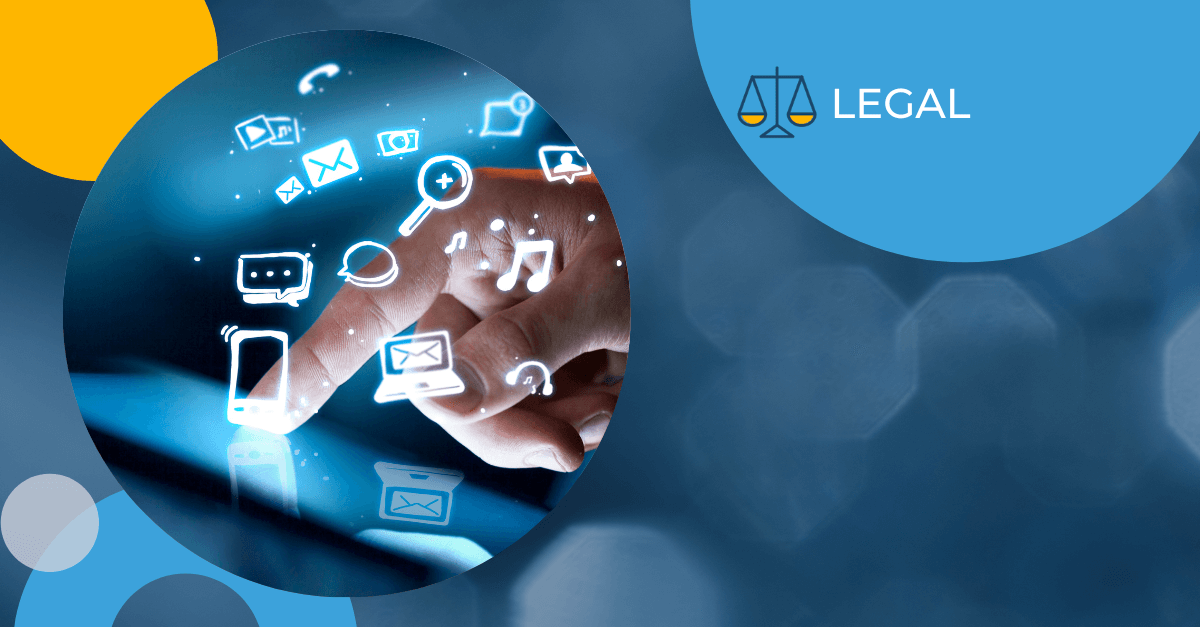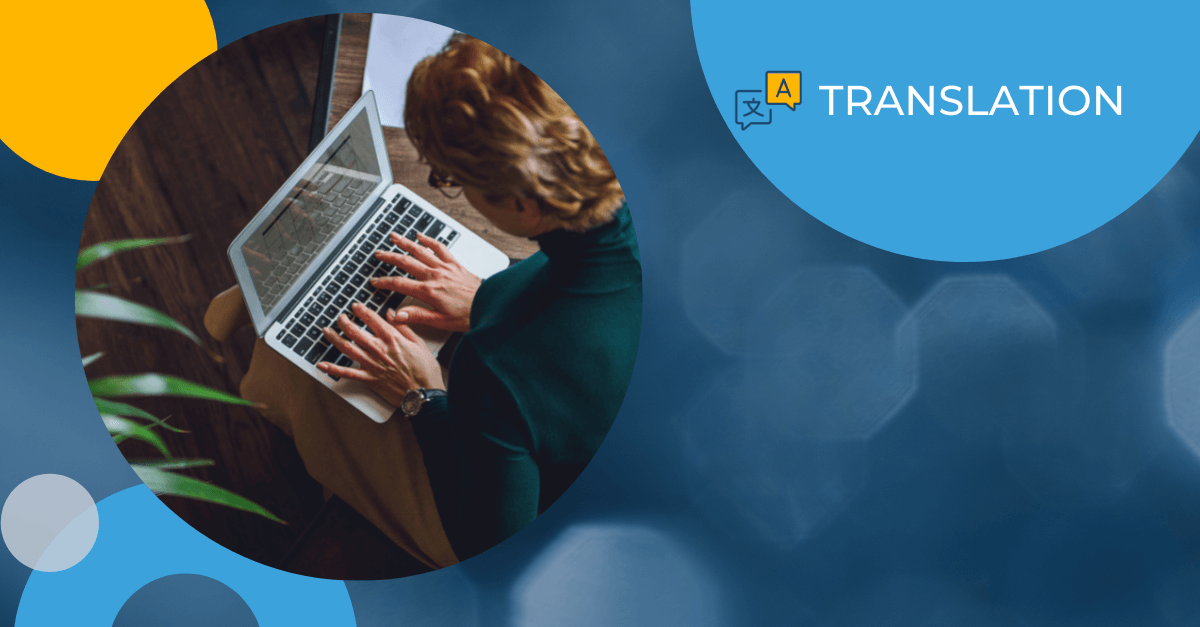Month: July 2017
Social Media E-Discovery in the Courtroom

The year is 1986. Mark Zuckerberg is two-years-old and the internet is just starting to make its way into research, academics and business. With the era of electronic data begun, Congress enacts the Stored Communications Act (SCA), extending Fourth Amendment protection against unreasonable search and seizures to electronically stored information (ESI).
Fast forward to 2017. Mark Zuckerberg’s daughter is one-year-old. Email, instant messaging and social networks dominate how we communicate – and ESI has become a routine target of discovery during litigation, including cross-border litigation. Translating legal documents that surface during cross-border e-discovery has become a critical part of that process. In 2013 the global e-discovery market (services and software) was valued at $5.5 billion. By 2022, it is expected to grow to around $21 billion – driven primarily by the exponential year-over-year growth in the volume of ESI generated.
Social media e-discovery
Today, a litigant’s social media posts (on Facebook, Instagram, Twitter, LinkedIn, etc.) can be included in e-discovery if there is evidence that their content is relevant to the case. These posts are used as evidence in numerous lawsuits, but are particularly central to matters related to personal injury, employment, family, theft of IP or unfair competition.
Part of the value of social media posts in e-discovery comes from the metadata, including date and time stamps and geolocation information, all of which can be instrumental to making or breaking a lawsuit. Lawyers, and legal translators (if needed), can use collection tools to capture and index data from public social media accounts around the world. If they are password-protected or otherwise access-restricted, litigation attorneys can request passwords or to receive the content directly from the account holder as part of the e-discovery process.
What does this mean for me?
For the individual, it is important to understand that content you have posted on the internet can and will be used against you in a court of law. There are already many examples of lawsuits claiming damages for physical and mental pain that have been thrown out due to time-stamped pictures of the plaintiff out and about that were used as evidence to prove that the claims were unfounded.
It is forbidden to tamper with potentially damaging social media content once a lawsuit has been brought or even once it becomes clear that a lawsuit is likely. Deleting posts and/or closing accounts can be treated as destruction of evidence, which is a serious offense in a civil or criminal law case.
The best advice is to always keep your social media posts, emails, instant messages, etc. clean of any content that could be construed as incriminating.
What does it mean for my company?
A content-rich online presence is an essential component of doing business today. A recent study conservatively estimated that 65% of Fortune 100 companies have active Twitter accounts and 54% have Facebook fan pages. One out of three F100 companies has a blog. Increasingly, companies are also translating their social media and blogs to target overseas consumers, and those posts may require legal translation in the event of a lawsuit.
Although online content was not as pervasive in 2006 when the Federal Rules of Civil Procedure were amended to include ESI, the Committee responsible for the amendment said the term was “intended to be broad enough to cover all current types of computer-based information, and flexible enough to encompass future changes and developments.” Thus, companies today have a duty to preserve relevant or potentially relevant online content when litigation and legal document review is underway or pending.
There is a growing trend of strong court sanctions against attorneys and their corporate clients for failing to comply with e-discovery rules by tampering with social media content.
Cross-border litigation and social media
Cross-border litigation poses considerable challenges for discovery/e-discovery in general and for social media discovery in particular. The casual and informal language used in social media posts, for example, makes them harder to parse in the machine translation platforms that are often used to pre-screen and catalog foreign language e-discovery content. In such cases, foreign language document review might be the better option. On a more fundamental level, however, international social media e-discovery raises very basic questions such as whose law governs standards of free speech on social media platforms. Or, as Alex Mills writes in the Journal of Media Law, “…whose law rules ‘Facebookistan’?”
The future of social media in discovery
With over 500 million tweets going out every day and close to two billion active Facebook users, it’s a prolific era for shared online content everywhere in the world. And while social media can bridge social gaps and support your marketing and sales efforts, it’s important to remember that every post, picture and comment is timestamped and stored. It can come back to haunt you or your company if litigation arises. Protect yourself, your colleagues and your company by giving serious thought to anything you post online.
Get the latest insights delivered to your inbox
Five Benefits of Single-Source Authoring for Technical Translation

Single-source authoring is a methodology commonly used by technical writers to increase the re-use of existing written content instead of rewriting information. When preparing materials for marketing abroad, single-source authoring software can make a significant difference in reducing the amount of technical translations you will need to complete for foreign audiences.
Take the example of a technical writer working at a company that makes a line of glucose monitoring devices. The devices all perform similar functions, but have slightly different features. The operation of all the monitors is very similar. It doesn’t make sense to write five separate user manuals and then translate those documents. It makes more sense to write the content once and then include any additional information to cover the unique features of each model. For example, the topic “Turning on your glucose meter” may be the same for all five models while “Calibrating your meter” may vary by model. In a single-source environment, the topic “Turning on your glucose meter” would appear only once, but “Calibrating your meter” could have different versions.
Now that the concept of single-source authoring is clear, let’s look at five key benefits of this methodology:
1. Better consistency
For technical document translation, consistency is critical for the efficient delivery of instructions to the user of software and equipment. There is little benefit to writing unique prose to describe repetitive tasks. It is important to maintain a consistent, predictable style, along with consistent use of terminology. Single-source authoring helps achieve this by focusing on the re-use of content. As in the glucose meter example, why write five different versions of “Turning on your glucose meter” when the only difference between the versions might be the model name? Write it once and insert a variable for the model name. Depending on which version of the manual you are publishing, your authoring tool can automatically substitute the correct model name.
2. Reduction of repetition
Repetition of content you have already written not only takes up space within your authoring environment, it also introduces the risk of publishing inconsistent information if one instance of a repeated passage is modified in one location, but not another. With single-source authoring, a given chunk of text is managed in one location and then its use is automatically multiplied across various documents by your authoring tool – saving you a lot of effort.
Another important issue for technical translation projects is avoiding the need to translate the same content twice. High-quality translation companies already have ways to address repeated text efficiently (through translation memory and preferred terminology lists), but there is still a cost to process each instance of repetition. This can be avoided by using single-source authoring, since each instance of text is unique.
3. Flexible output options
Single-source authoring tools enable authors to publish to myriad formats. MadCap Flare, for instance, allows automatic publishing to the following:
- HTML5 Webhelp (PC and Mobile)
- Eclipse Help
- WebHelp
- WebHelp Plus
- XPS
- Adobe Framemaker
- MS Word
This can literally be done with the click of a button. That is why single-source authoring software is also known as multi-channel publishing software. For example, imagine that you have a Help System for your company’s software product. You can automatically create a version that can work on users’ computers and mobile devices along with a PDF version that they can print – all using the same set of source files. You don’t need multiple copies of your content to generate these various formats.
Simultaneously, your technical translation agency can generate professionally translated versions of your documents using the same source files you used to produce your (English) originals.
4. Centralized control of critical data across multiple regions
By taking control of your content in a single-source environment, you can guarantee global standards. If all your technical document translations are based on the same set of original files using the same structure, you can more confidently publish into multiple languages, knowing which results to expect. This includes control of your intended message as well as the look and feel of your documents. To achieve this 10 or 15 years ago was difficult and time-consuming. Now it still takes effort, but it’s a fraction of what was required in the past.
5. Reduce desktop publishing costs
When using single-source authoring, the source project you create will contain all your design choices for page layout, logo placement, fonts and respective styles. Most single-source authoring tools leverage the use of CSS (Cascading Style Sheets) technology. CSS standardizes styles across your whole documentation environment. Your CSS can even be internationalized so that the right fonts are used for specific languages (this is critical for logographic languages such as Chinese and Japanese). By centralizing control of design decisions, it is possible to automatically generate foreign language translations of your original documentation that require very little manual desktop publishing. Traditional document formats (MS Word, Framemaker, InDesign, etc.) that are translated typically require labor-intensive desktop publishing, which can cost as much as 30% of the cost of translating documents. When using single-source authoring, this cost drops to less than 10% of the cost of translation.
Implementing single-source authoring
Some of the most popular tools for single-source authoring are MadCap Software’s Flare, Adobe RoboHelp, or Adobe Framemaker. Once implemented correctly, single-source authoring can increase your company’s publishing capabilities while lowering costs for all your technical translations and communications.

